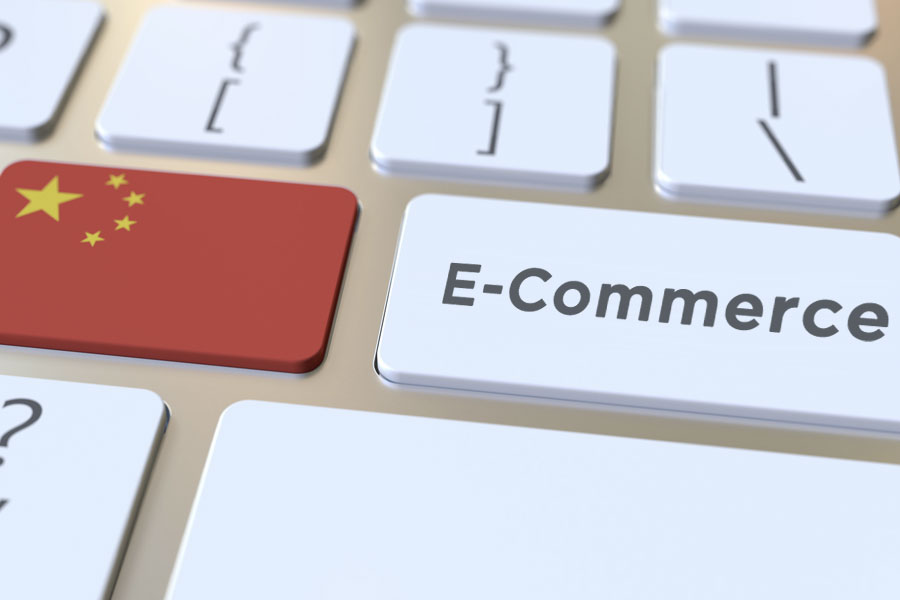Three years into Covid-19 outbreak, the rapid digital technology and ecommerce development has tremendous influence on the daily lives of the Chinese people. From online grocery purchase, live streaming, and social online shopping; ecommerce platforms have experienced huge growth in the last few years. With a population size of 1.4 billion, more and more China consumers are demanding products and services from overseas brands as domestic ecommerce providers and marketplaces can no longer cope with the demand of quality overseas products ranging from luxury bags, cosmetics, fashion apparel, watches and more, The China government has been supportive of cross-border e-commerce. Indeed, the State Council has added more cross-border e-commerce pilot zones to reach 105 in total across China today. This initiative allows overseas ecommerce businesses to enjoy preferential tax policies and streamlined customs procedures. That way, China consumers can buy products from any global ecommerce platforms.
Consequently, for overseas merchants, accessing the China market becomes a key strategy to establish brand presence and business opportunity without the heavy investment in physical retail presence. Cross-border e-commerce allows companies to explore selling into China with the lowest possible costs of doing business and the upside of huge domestic market potential. However, this is not without challenges since China ecommerce policies are constantly changing and the customs compliance regulations are strict and often complex. Hence, overseas merchants are often unable to achieve smooth and efficient operations in cross-border e-commerce when they lack the local understanding and technical capabilities to manage multiple aspects of the cross-border operations – integration of local payment gateway, logistics and customs clearance. Above all, keeping up to date with China cross-border e-commerce regulations and laws.
To help you navigate the unfamiliar grounds of China cross-border e-commerce (CBEC), we will share some China CBEC key points and suggestions to help you understand how you can build your business strategy to enter China based on practical solutions from MyMyPanda CBEC platform.
Why is China’s cross-border e-commerce a potential market for overseas ecommerce brands?
As China economy continues to grow rapidly in the last 10 years, the living standard in the country has improved and Chinese people are experiencing tremendous shift in their lifestyle. With the increase in income level, the size of the middle- and upper-classes have also increased. China consumers from big cities and smaller third and fourth tier cities are gradually looking towards overseas products and brands that are not available in their local markets. However, buying from overseas brands through cross-border e-commerce has many challenges:
Purchasing cross-border commodities often requires understanding of the English language and access to those platforms that differ from most, if not all, domestic ecommerce websites.
Payment for orders often do not support local payment methods like WeChat Pay or Alipay, while majority of Chinese consumers do not have credit cards or PayPal account that are common overseas payment options.
Shipping time is very long, up to four weeks in some remote areas. This experience is bad when you compare to the local delivery that takes less than 3 days from order placement.
Cross-border products that are not in compliance with local customs regulations will have to pay higher personal tax or risk package being returned. Ultimately, this becomes a deterrence for consumers to buy from overseas ecommerce merchants.
Overseas brands are not familiar with China consumer market – differences in lifestyle across city tiers, local regulations & policies, social media behaviour, competitive business models and more. With the absence of local knowledge for ecommerce operations, many companies adopted personal channel or namely “人肉代购” that is an unofficial business channel for shipping products into China. One of many disadvantages is that the authenticity of the goods cannot be verified. Hence, packages risk being intercepted by customs indefinitely and subject to heavy taxes.
The demand for overseas products continues to grow such as high-end cosmetics, luxury goods, watches, jewelry and handbags. Consequently, the annual turnover through personal shipping (consumer-to-consumer) channel also increases despite poor buying experience and delivery obstacles. The overwhelming logistic pressure on customs & tax department prompted the China government to introduce new cross-border e-commerce regulations. From setting up more bonded warehouses across China to preferential tax policies and customs clearance support.
All these efforts to alleviate the bottleneck with personal shipping mode contributed by cross-border ecommerce trade and bring a better customer experience for Chinese consumers. Ultimately, the new China regulations have created tremendous opportunities for overseas ecommerce brands and companies to expand their footprint into China market via cross-border e-commerce strategy; and enjoy greater business growth with transparency and lower cost of business operations.
What is China cross-border e-commerce?
China cross-border e-commerce refers to overseas ecommerce brand or company selling their products direct to consumers in China. Traditionally, brands enter the China market by opening an account on Chinese e-commerce marketplace or developing an independent online shop in China. However, the company may be required to have a Chinese entity to provide legal qualifications and handle relevant affairs. With the popularity of China’s cross-border e-commerce platforms like Tmall Global, JD International etc., overseas brands have been selling products in China on these platforms. But the cost of using those platforms, marketing and logistics are increasingly more expensive; so overseas brands are desperately looking for alternative solutions.
When the Chinese government introduced new cross-border ecommerce regulations, many overseas brands welcome the idea where they can now sell products directly to China consumers from their overseas ecommerce website. What’s more, Chinese consumers can enjoy great experience with China payment options, fast customs & taxes with bonded warehouse, and next day shipping to customers. This low-cost and fast cross-border e-commerce solution is available through MyMyPanda CBEC platform.
What is MyMyPanda CBEC platform?
MyMyPanda CBEC platform is a simple solution to connect overseas ecommerce to access China market potential. With a simple plugin to your existing ecommerce, you can provision your ecommerce with China payment options, fast customs clearance, low tax and compliance, and fast shipping to customers from bonded warehouse distribution. Importantly, China consumers can experience the same cost-effective, digital payment and real-time logistics services currently provided by local e-commerce platforms. Ultimately, this one-stop solution has made MyMyPanda CBEC platform the most competitive cross-border ecommerce strategy in the market.
Omni-channel marketing approach with MyMyPanda CBEC.
China influencer marketing has been thriving. Over the years, the consumer economy has created a culture of sharing opinions and buying experience across social media like XiaoHongShu, Weibo, WeChat etc. Hence, it is imperative for ecommerce entering into China market to also build brand awareness using multitude of digital marketing strategies. One of the important marketing channels is the use of influencers or key opinion leaders (KOLs). Buying decisions in China are highly influenced by KOLs who spend hours doing live-streaming commerce and consumers sharing products reviews on social media.
The amount of brand awareness and product exposure across a spectrum of digital platforms become a key strategy for many ecommerce businesses. Hence, when you build your China strategy with MyMyPanda CBEC solution, make sure your ecommerce website has a platform for consumer generated content – allowing consumers and influencers to share their reviews of products and shopping experience. Consumer opinions are highly persuasive, and word-of-mouth is a powerful viral marketing strategy to build fast success for ecommerce brands.
Building on our digital marketing, social media, and ecommerce knowledge in China, MyMyPanda has a wealth of experience to help ecommerce brands develop an effective omni-channel digital strategy. When you work with MyMyPanda, we have a team of IT experts, ecommerce and social media professionals that can support your ecommerce business from building brand awareness, driving traffic to ecommerce and converting prospects to buying customers. This is the reason why many companies are choosing MyMyPanda as a strategic partner for a one-stop solution for all their cross-border ecommerce business needs.
The fierce competition in China’s cross-border e-commerce industry is unfolding. The government is progressively introducing preferential tax policy and fast customs clearance to promote cross-border trade. The domestic demand is high and cross-border ecommerce will enable more Chinese consumers to have greater access to buy products globally. MyMyPanda CBEC platform is well positioned to support overseas brands with low-cost, effective logistic and China customs compliance route into China. Ultimately, we bring a better shopping experience to the consumers in China which in turn bringing you more sales for your business.




